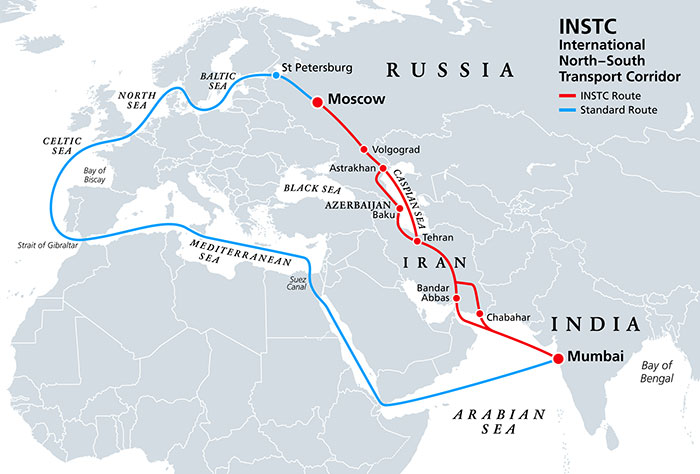Iran Expanding National Railway & Highway Networks
Huge drive to expand INSTC road and rail connectivity
Kheirollah Khademi, the Iranian Deputy Minister of Roads and Urban Development, and CEO of Construction and Development of Transportation Infrastructure Company (CDTIC) has said that up to 561 km of new railway lines are expected to be launched in Iran by the end of the current Iranian year – March 20, 2023. According to Khademi, 70% of the work has already been completed.
At present, a total of 3,300 km of new railway lines are being built in the country, adding to the existing 14,000 km of railway lines available in Iran.
In terms of highways, Khademi said that “In addition, 1,035 km long controlled-access highways are being built in Iran. Of this, 293 km are planned to be put into use by the end of the current Iranian year (March 20). There is an 85% physical progress in the construction work. In total, there are 2,800 km of controlled-access highways in the country.” Examples of this are the four-lane highway that has opened connecting Caspian and Persian Gulf ports.
Khademi also pointed out that 6,100 km long highways are being built in the country, of which, 1,000 km are expected to open during the current Iranian year.

Iran has been heavily sanctioned by the United States and European Union, however its strategic position as a vital Caspian-Arabian Sea link as part of the INSTC has repositioned the country as a strategic route between Europe and Asia.
That is likely to create friction between the United States and EU as the former wants the current Iranian Government out of the global picture, while the EU requires it to safeguard the INSTC as a primary supply chain transport corridor. Current unrest in Iran can partially be attributed to attempts to induce regime change. Should INSTC routes not come online as predicted, EU import-export costs will rise still further.
Related Reading





